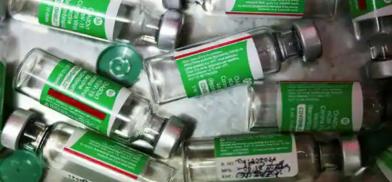India's new soft power: Pharmacy of the world
Gratitude has been expressed to India from the highest political levels of the 57-odd countries that have received 56 million doses through outright grants, commercially or through COVAX, writes N Chandra Mohan for South Asia Monitor

India is a key player in the race to roll-out vaccines for the raging COVID-19 pandemic that has afflicted 116 million-plus people around the world. At a time when 292 million doses have been administered globally as of early March, most of it is in the advanced countries while a hundred low and medium-income countries in Africa, Latin America and Asia do not have access to such vaccines.
India with its prowess in producing vaccines has the capability to address this “immunity inequality” -- to borrow an expression of the Bill and Melinda Gates Foundation – even as it has embarked on the world’s largest drive to inoculate its 1.3 billion population.
India’s role as the vaccine pharmacy of the world has a lot to do with the Pune-based USD $804 million Serum Institute of India (SII), the largest low-cost producer of vaccines globally. This company has taken a strategic bet to help find and produce a COVID-19 vaccine by investing USD 800 million. SII entered into several partnerships, including one with Oxford University in collaboration with AstraZeneca to supply 1 billion doses to low and medium-income countries with a commitment to deliver 400 million doses of its vaccine AZD 1222 by end-2020. A state-of-the-art facility is being set up in Pune to turn out a billion doses of this vaccine.
COVID vaccine to low and medium-income nations
SII struck a deal with the global vaccine alliance GAVI and the Bill and Melinda Gates Foundation in September 2020 to supply 200 million doses - half which is for India - at a low cost of USD 3 per dose in 2021 for low and medium-income countries. It has received USD300 million in risk-funding for this undertaking. SII thus is in the driving seat to deliver a low-cost vaccine for the base of the pyramid in Asia, Africa, and Latin America through COVAX, the vaccines pillar of the Access to COVID-19 Tools Accelerator, co-led by the Coalition for Epidemic Preparedness Innovations, GAVI and the World Health Organisation.
The vaccines of SII and Bharat Biotech, Covishield and Covaxin respectively, have been approved by the Drugs Controller General of India, for emergency use authorization in India - a drive that commenced on January 16. This will initially cover a 300 million-strong priority group comprising 10 million health workers, 20 million frontline workers, and 270 million people above 50 years of age with or without co-morbidities over the next six months. By the end-2021, vaccines of six different companies will enter the market. Around 3.6 billion doses thus will be available, enough to take care of low-income nations and local requirements.
Vaccinating 300 mn Indians
Currently, around 20 million people in the priority group have received their jabs. However, the pace of vaccination has to substantially pick up from levels of 1.5 million a day if the objective of immunizing 300 million is to be achieved in six months. What then about the whole population? While arithmetic suggests that at the current pace, it would take roughly 666 days to vaccinate a billion people, leading microbiologists like Dr. Gagandeep Kang at the Christian Medical College at Vellore told BBC News that “we are underestimating the complexity of the exercise. It will take at least a couple of years to get half of Indians vaccinated.”
There are a number of constraints, including the daunting logistical one of reaching the nooks and crannies of rural India. The state of public health facilities is uneven across the countryside, ranging from advanced in states like Kerala to very weak in the poorest states of Uttar Pradesh and Bihar. Another relates to the sort of cold chain facilities available to store the vaccines at 2C to 8C degrees of temperature. Further, if 4 million doctors and nurses are involved in the pre-COVID-19 immunisation programme, more is needed for a nationwide drive to administer Covishield or Covaxin and other vaccines to the entire population.
Vaccine for global poor
However, none of this has a bearing on the domestic situation of potential plenty on the vaccine front to minister to the needs of the global poor, including the South Asian neighbourhood. As with the earlier supplies of the anti-malarial drug hydroxychloroquine, the global supply of COVID-19 vaccines exemplifies Indian pharma’s soft power.
Gratitude has been expressed to India from the highest political levels of the 57-odd countries that have received 56 million doses through outright grants, commercially or through COVAX. In Canada, for instance, there was a car rally in the Greater Toronto Area over the initial supply of 500,000 doses. The neighbourhood has been a top priority with Afghanistan receiving 500,000 doses, Bangladesh (9 million), Sri Lanka (1.3 million). Maldives (212,000), Bhutan (150,000).
Around 22 countries, mostly in Africa, have received supplies through COVAX as of March 7, according to the Ministry of External Affairs. All of this forcefully underscores India’s global role in combatting the pandemic.
(The writer is an economics and business commentator based in New Delhi. His views are personal. He can be contacted on nchandramohan@rediffmail.com)










Post a Comment